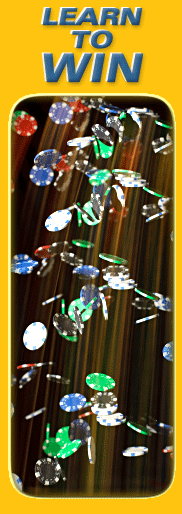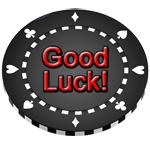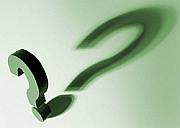Blackjack Surrender
by Henry Tamburin
Blackjack Surrender is a playing option that is offered by some but not all casinos.
If you know when to use the surrender option correctly, it can be an advantage. On the other hand, if you misuse the option it’s like throwing money down the drain. This lesson at Learn to Play Blackjack program explains.
First, an explanation of what blackjack surrender is all about. After a player receives initial two cards, the player may, at his discretion, surrender the hand. If he decides to surrender, he indicates this to the dealer in one of way two ways.
Either by verbally telling the dealer he wants to ‘surrender’ or by using a hand signal which is to place your finger on the layout and move it from right to left, (most casinos nowadays are opting for the hand signal).
When a player signifies that he wants to surrender his hand, here's what happens – the dealer will remove the player cards from the table and 50% of the player’s bet goes into the dealer’s chip tray.
In essence, the player has forfeited his chance to play out the hand and the casino keeps one-half of the players bet.
How do you know if a casino allows the blackjack surrender rule? Sometimes they will post the rules on a placard that sets on the table. If not, just ask the dealer whether blackjack surrender is allowed.
Blackjack surrender seems like a cowardly thing to do when you play the game. How are you supposed to win when you give the casino half of your bet? This seems like this is just another sucker bet for the tourists.
If thoughts like this raced through your mind, read on and you will be surprised to learn that both the casino and players can profit with this playing option.
From the players perspective when it is the best time to surrender a hand? It seems logical that you should only surrender a hand when your chances of winning that hand are not very good. After all isn’t it better to save half of your bet than to lose it all.
Let’s take a look at what the odds are of winning one of the worst player hands in BJack - a 16 - when the dealer’s upcard is a 10.
If you analyze this hand over and over using a BJack computer software program, you'll find that you will lose over the long run about 77% of the hands when you hit. That means you will win about 23% of the hands.
If I wager a buck a hand, lose 77 hands, and win 23, I would be down $54 (77-23). But what about standing on that 16 rather than hitting? You'll actually do a tad bit worse and if we round the numbers, you’ll end up losing about the same - $54.
Now let’s take a look at what happens if we surrender the hand.
If you bet a buck a hand and surrender, you get back 50 cents.
If you do it over 100 hands, you'll end up losing $50.
Compare this with the $54 you can expect to lose by either hitting or standing on that 16.
Get the point? By surrendering, you cut your loss by $4 in a losing situation.
The bottom line is that you should only surrender hands when your chances of winning are less than 25% (this means the casino has a greater than 50% of beating you). If the casinos edge is greater than 50% than you are better off to surrender half (or 50%) of your bet.
Blackjack Surrender: multiple deck games, you should only give up these hands.
16 when the dealer shows a 9, 10, or ace
15 when the dealer shows a 10.
Do not surrender a pair of eights and never surrender a soft 15 or 16 (that's a hand that contains an ace counted as 11 like ace, 5).
If the dealer has an ace showing, the player cannot surrender their hand until after the dealer checks for a BJack. If the dealer has a BJack, you will lose your hand (i.e. you can’t surrender).
If blackjack surrender is good for players, why do casinos make money on this rule? Because many players will surrender all sorts of hands such as a hard 12 or 13 and if you do this, you will literally be throwing money at the casinos.
The bottom line is this – surrender is a good player’s option when it’s used properly so learn the surrender basic playing strategy and use it when a casino allows surrender.
Blackjack Surrender is followed by a Strategy lesson
OR
Return to Learn to Play Blackjack Program
GT is attentive about getting the word out about our free programs, lessons and add-ons offered, however, we ask your assistance and consideration in promoting us.
Click link below that reads, "Enjoy this page? Please pay it forward. Here's how..." to add a link to your site, blog or personal page.
Tips, Terms & Wins
Blackjack Side Bet: Super 7’s
The player makes a side bet in the hopes he is dealt one or more 7’s. For example, if his first card is a 7, the payoff is 3 to 1.
If his first two cards are unsuited 7’s, it’s a 50 to 1 payoff and if both 7’s are suited the payoff skyrockets to 100 to1.
Finally, if the player is dealt three 7’s the payoff is 500 to 1 if unsuited and a whopping 5,000 to 1 if suited.
Although the high payoffs are inviting when you do the math the casino’s edge is around 11%.










